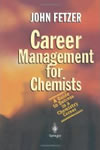All Articles
Addiction Issues & Substance Abuse
Healthcare
Alternative Dispute Resolution (ADR)
Healthcare Facilities - Hospitals
Anger Management & Related Issues
Industrial Hygiene and Safety
Appraisal & Valuation
Injury
Aquatics Safety
International Trade
Archaeology - Archeology
Legal Issues
Architecture
Life Expectancy - Life Care Planning
Arms - Guns - Weapons
Linguistics
Banking
Machinery
Boating
Manufacturing
Branding - Brand Management
Market Research
Cosmetology: Hair / Makeup
Medical Malpractice
Crime Scene Investigation
Mining
Criminology
Oil & Gas
Crisis Management
Pools and Spas (Recreational)
Damages
Premises Liability
Dental - Dentistry
Psychiatry
Domestic Violence
Recreation & Sports
Elder Abuse
Securities
Engineering
Security
Environment
Slip, Trip & Fall
Eyewitness Testimony
Supply Chain Management
Family Issues
Telecommunication
Forensic Analysis
Toxicology
Hazardous Materials
Workplace Violence
More...

POLICE-PRACTICES-PROCEDURES-PAGE ARTICLES MAIN PAGE
. Contact Us if you are interested in having your work published on our website and linked to your Profile(s).
All Articles
Accident Prevention & Safety
International Trade
Addiction Issues & Substance Abuse
Linguistics
Alternative Dispute Resolution (ADR)
Logistics - Reverse Logistics
Appraisal & Valuation
Manufacturing
Aquatics Safety
Marine - Maritime
Archaeology - Archeology
Market Research
Banking
Marketing
Business Consulting
Mediation
Business Management
Metallurgy
Child Welfare
Neuropsychology
Computers
Nursing
Corrosion
Obstetrics - Gynecology (OBGYN)
Cosmetology: Hair / Makeup
OSHA
Crime Scene Investigation
Pain Management
Dental - Dentistry
Patents
Design
Pharmacy & Pharmacology
Education & Schools
Plants & Trees
Elder Abuse
Politics
Electrical - Electrocution
Product Liability
Energy - Utilities
Professional Malpractice
Failure Analysis
Psychology
Feng Shui
Recreation & Sports
Hotels & Hospitality
Slip, Trip & Fall
HVAC - Heating, Ventilation, Air Conditioning
Supply Chain Management
Intellectual Property
Transportation
More...
Featured Articles
There are no active articles here at this time. Please use the search bar, try another category, or contact us if you would like to contribute an article.
This Article is unavailable. Contact Us
Search articles by title, description, author etc.
Sort Featured Articles
Featured resources
When Disaster Strikes: A...
by Matthew Stein, PE
Probability and Statistics for...
by Anthony Hayter, PhD
Career Management for Chemists: A...
by John C. Fetzer, PhD
Follow us










